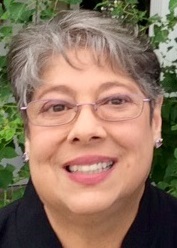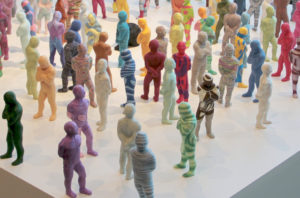“Until lions start writing down their own stories, tales of the hunt shall always glorify the hunter.”
– African Proverb
 Telling the story of one’s sexual abuse is an excruciatingly painful act. To open the door on what may have been for years a secret is to open the door of the soul. When one lives under the heavy weight of sexual abuse, telling can exacerbate tucked-away trauma. So it is that survivors of sexual abuse or harassment keep the secret of what happened to them.
Telling the story of one’s sexual abuse is an excruciatingly painful act. To open the door on what may have been for years a secret is to open the door of the soul. When one lives under the heavy weight of sexual abuse, telling can exacerbate tucked-away trauma. So it is that survivors of sexual abuse or harassment keep the secret of what happened to them.
More often than not, the bystanders who surrounded them during the abuse also remained silent. Choosing to be self-appointed protectors of the status quo, they felt compelled to protect reputations, preserve relationships, ensure the good standing of the church or institution, avoid stigma, create a sense of false comfort, and minimize the truth of the victim’s abuse story.
Bystanders can no longer stand in this place of complicity. To do so is, quite simply, to sin.
The bystander, of course, is not the one who perpetrates the sexual abuse, but the bystander often commits his or her own brand of abuse by witnessing, suspecting or learning about a victim of abuse and choosing to remain silent. The damning truth is that followers of Jesus in the way of truth and justice are anything but guiltless when it comes to the sin of the bystander. Could it be that we have contributed to cultures that tolerate sexual violation in our churches, in our workplaces and on our college campuses? Could it be that we have colluded to avoid the dire consequences that come with revealing the truth? Could it be that our inadequate or inappropriate response to sexual violence feeds the sin of the bystander?
Baptist News Global recently reported about a “credibly accused sexual predator” who had been employed by several Baptist organizations: “With the ink barely dry on a Southern Baptist Convention resolution apologizing for past failures in handling abuse allegations, the SBC International Mission Board is facing charges that it recently allowed a credibly accused sexual predator to slip through the cracks.”
In this disheartening story, the bystander sin falls on the IMB and its general counsel, Derek Gaubatz, who in 2007 counseled the alleged victim “to let it go” and to forgive her abuser.
 Bystander silence, and even complicity with the abuser, is not uncommon. The same story referenced another incident in which a pastor and a seminary president signed a statement of support for a pastor friend named in a lawsuit alleging “systematic concealment of abuse,” a phrase should make us cringe. “Concealment of abuse” breeds a culture of violence and gives rise to shattered relationships that are almost impossible to mend.
Bystander silence, and even complicity with the abuser, is not uncommon. The same story referenced another incident in which a pastor and a seminary president signed a statement of support for a pastor friend named in a lawsuit alleging “systematic concealment of abuse,” a phrase should make us cringe. “Concealment of abuse” breeds a culture of violence and gives rise to shattered relationships that are almost impossible to mend.
Bystander sin in all its shame also exists within families. The reasons family members protect abusers are virtually endless: bringing shame to the family, ruining a person’s reputation, protecting the abuser’s family relationships, wanting to avoid the additional pain created by law enforcement and the courts, believing that the victim must have encouraged the abuse, or simply choosing denial because believing the truth would hurt too much.
I was there as a child, in that place of holding the pain of abuse alone because the people in my world would not, or could not, believe my story. My mother needed to believe she did not hear me. My aunt could not let me finish the first sentence. Those two responses silenced me for more than 20 years and sentenced me to a life of secrets and lies. When abuse happened again and again, with other perpetrators, I was well conditioned to respond with silent assent.
Do I blame the bystanders in my life? In some ways, yes. Theirs was a sin of failure to protect, but it was also a sin born of their own fear and denial. In addition, it was a sin borne of a societal reality that demanded the illusion of respectability and morality. Social norms have the power to excuse the perpetrator of abuse, absolve the bystander who refuses to get involved and, tragically, blame the victim.
“All of us are bystanders who have choices about what we see and hear and about how we respond.”
Into this societal illusion that for decades held victims as silent hostages, the #MeToo movement shouted “enough!” Stories that came to light began to change the landscape for victims. It was also the kind of change that affected both perpetrators and bystanders in unprecedented ways. Abusers had secured their power from the belief that victims – and bystanders – would keep the secret. Now, literally around the world, those who cried out “Me too!” created a new group of survivors who at last were finding their voices. As a result of this societal shift, churches, universities, businesses and other institutions were being called to account. At the same time, the light also fell on the apathy of the bystanders.
The truth is that all of us are bystanders who have choices about what we see and hear, and most importantly, about how we respond. Remedies remain complex, but there are pathways that may lead to healing:
- Ensure at all times that children are in safe places with safe people.
- Do not minimize the possibility that anyone can be abusive.
- Pay attention to persons who seem troubled, anxious or afraid.
- Refuse to be complicit in keeping an abuser’s secret.
- Speak and act for the rights of the victim.
- Do not interrogate the victimized person; believe their story without question.
The church’s calling is the ministry of compassion, understanding and spiritual care. This kind of vigilant bystander response hopefully envisions an environment where sexual abuse does not happen.
The Courage to Heal: A Guide for Women Survivors of Child Sexual Abuse includes an insightful and poignant suggestion from Emily Levy, an adult survivor of child sexual abuse: “Tell it as a healing ritual, as an epitaph, as discovered and interpreted seven generations from now. Tell it so it will never happen again.”
Generations will hold us accountable for failing to protect those who suffered sexual violence, but if we listen intently to the voices who speak their truth, we might just usher in a new day that renounces silence and secrecy. As people called to partner with God in the redemption of all creation, can we imagine a world where bystanders consciously choose to see and hear, refuse to keep the secret, empower survivors of sexual abuse to tell their stories and in their telling open wide the windows of truth and healing?
Yes! We can – we must – imagine such a world. God’s church can lean into repentance and confess our participation, directly or indirectly, in the sin of the bystander. Doing so will begin to redress the indignities and injustices endured by adult survivors struggling with buried pain and by children who have lost their innocence. When we arise as God’s emissaries of healing and hope, we will finally be able to comfort victims who live their lives in the darkness, to honor them when they tell their stories and to walk with them toward the light.
With them, we can “tell it as a healing ritual.”
